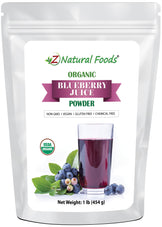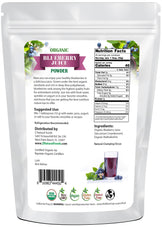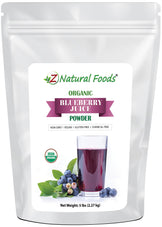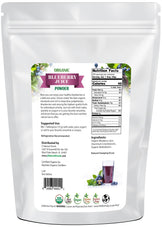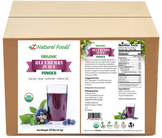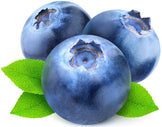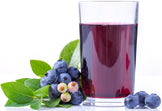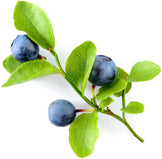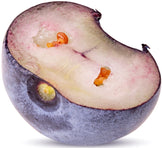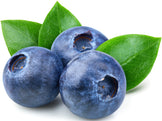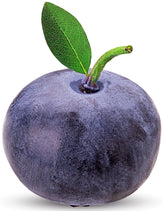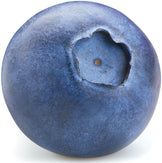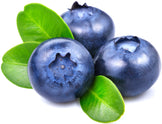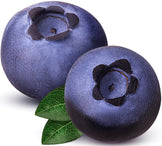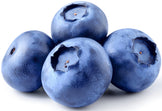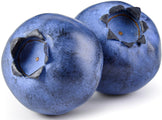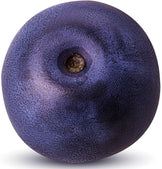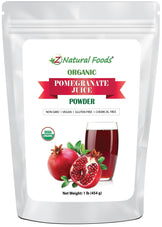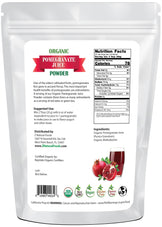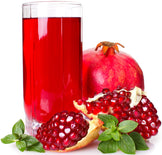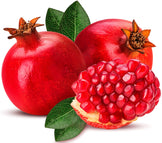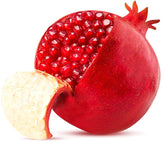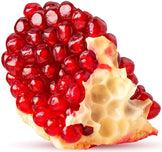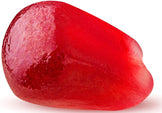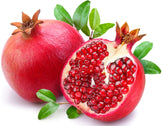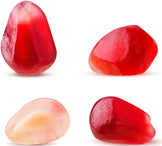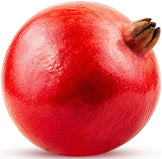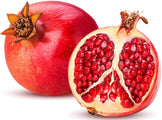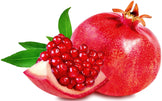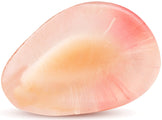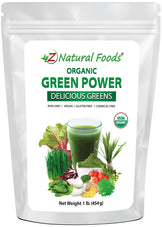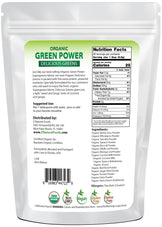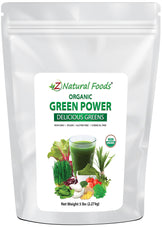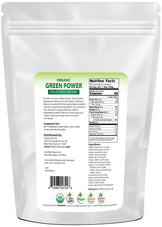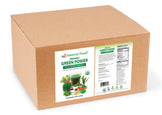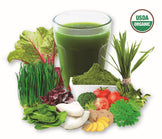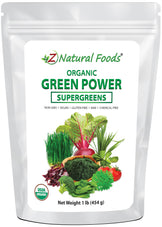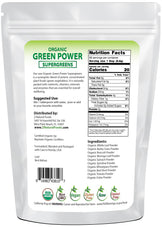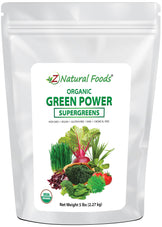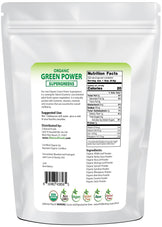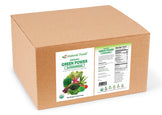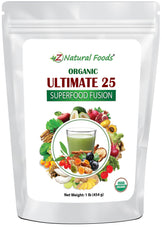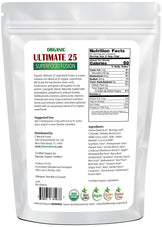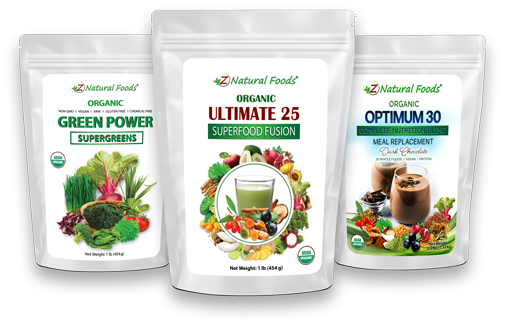Description
Description
In order to answer this question, it is vital first to understand what green powders are and the nourishing qualities they can potentially provide.
Green food powders are considered a modern food product created from an individual or a wide variety of dried or juiced grasses, vegetables, and seaweeds to develop a quality source of concentrated nourishment for supporting the health of human physiology.
Green foods have a tremendous reputation for providing high-quality nourishment, like micronutrients and phyto-compounds, specifically chlorophyll. When prepared and utilized correctly, they can be an excellent and easy way to add concentrated nourishment to your diet.
In this article, we will discuss the following aspects of this topic:
- Nourishing qualities of green powders
- A Traditional Chinese Medicine Perspective on Greens
- The difference between juice and whole-food powders
- The purpose of adding fruit juice powders to a green drink
- Some of the potent compounds found in fruits
- A Western and Traditional Chinese Medicine Perspective on our top fruit juice powder picks
Three good reasons you should be consuming greens daily:
Chlorophyll
Chlorophyll is a compound in plants that gives them a deep, vibrant green color.
This is the primary compound that helps in photosynthesis (using sunlight to synthesize foods from carbon dioxide and water). Simply put, the deeper green the vegetable, the more chlorophyll it contains. Two primary types of chlorophyll are found in plants (Chlorophyll A & B), both of which are fat-soluble compounds with highly nourishing and protective properties.
When chlorophyll is ingested, it moves throughout the body via molecular groups called micelles, which help the body absorb lipids and fat-soluble nutrients (they also help transport fat-soluble nutrients to the small intestines).
Chlorophyllin is a compound produced from chlorophyll through a process called saponification. This process takes chlorophyll paste and adds sodium hydroxide to create a saponification reaction (breaking the ester bonds between fatty acids and glycerol, resulting in free fatty acids), adding copper to crystalize, purify, and making sodium formation, thereby creating a sodium-copper chlorophyllin end product. In simple terms, chlorophyllin is the water-soluble version of chlorophyll. In earlier human studies, it was shown that by taking 100mgs of chlorophyllin daily, there was a 55% decrease in DNA damage in individuals with preexisting liver issues.
Other reports have discussed the relationship between eating fresh vegetables (including leafy greens) and those with advanced gastrointestinal issues that chlorophyll may modify specific agents that damage DNA.
Vitamin K
Unless you have been living under a rock for the past ten years, it will come as no surprise the vital importance of vitamin K on human health. Before we get into the nourishing qualities and sources of the vitamin K family, let’s break this down so we understand all of the vital details.
Vitamin K describes the family of K vitamins 1, 2, and 3.
This family of fat-soluble vitamins is implicated in many essential biological processes like Blood clotting (by assisting in the conversion of particular coagulation factors into their mature forms), bone building (activating osteocalcin, a protein that supports the accumulation of calcium in bone and teeth), and possibly reducing calcium deposits in the arteries (activated matrix GLA protein which prevents calcium accumulation in soft tissue).
Technically, there are three forms of vitamin K, but what we know as K3 has been banned by the FDA due to its potentially toxic effects. It seems that the nourishing qualities are found in K1 and K2.
- Vitamin K1 (phylloquinone) is primarily found in green leafy vegetables
- Vitamin K2 (Menaquinone) is found mainly in fermented foods, milk, meat, eggs, and cheese and has multiple subtypes; MK-4, MK-6, MK-7, and MK-9.
- MK-4 is primarily found in aminal fats like egg yolks, lard, and butter.
- MK-7 is a product of cheese and fermented foods but is mainly found in Natto(a fermented soybean product).
- Ultimately, K1 and K2 have the same functions and work via the exact mechanisms of action, except that K2 works more efficiently.
A randomized controlled study discussing Vitamin K and its association with mortality risk stated that those who increased their intake of phylloquinone and Menaquinone had a lower chance of all-mortality compared to individuals who decreased or did not change their intake.
Carotenoids
Phytonutrients are compounds produced by plants to help them resist external environmental threats. These compounds are believed to have nourishing qualities that may support various human health factors. Carotenoids are a class of red, orange, or yellow fat-soluble pigments produced by plants, algae, and photosynthetic bacteria. There are more than 600 types of carotenoids (some of the most common include alpha and beta carotene, lycopene, lutein, and beta-cryptoxanthin), all with unique attributes that are researched for their ability to take on antioxidant-like qualities potentially.
Carotenoids are classified into two primary groups; Xanthophylls (primarily protect from too much sunlight, contain oxygen, more yellow pigment, and are associated with nourishing the eyes), which closely associate with green leafy vegetables, and Carotenes(have no oxygen and are associated with orange pigment).
An article published in 2001 discussed the importance of green leafy vegetables (specifically spinach, kale, and purslane) and assessed (based on supporting healthy biological function) the most essential phytonutrients in leafy greens like spinach and kale are the carotenoids lutein, beta carotene, and zeaxanthin.
Green Food Powders According to Traditional Chinese Medicine (TCM)
To begin, it is vital to understand that while every individual green food can be cooling or warming (according to TCM principles), most green food powders are a mixture of many ingredients. The wide variety of ingredients often creates a product that is neutral in temperature by default.
One of the principles in TCM is the five elements theory that outlines the relationship between the different elements of nature (wood, fire, earth, metal, and water) and the life force, aka Qi, that flows through them. Different colors and seasons are also a part of this equation (Heart/red/summer, spleen and stomach/yellow, lungs/white/fall, kidneys/black/winter).
Regarding green foods and the color green, Traditional Chinese Medicine believes this represents springtime (when all plant life begins to flourish) and is related to the wood element.
The wood element resonates with the liver (The grand architect for our vision of the future and strategic planning), gallbladder (The center of our ability to decide and judge wisely), tendons, nails, eyes, sour flavor, and the emotion of anger. TCM also believes the liver's primary functions are to store blood and regulate the movement of Qi (life force) within the body, and it is partnered with the gallbladder.
Therefore, focusing on nourishing the liver and gallbladder with foods that support detoxification pathways, like greens, may provide significant benefits.
Are Green Food Powders the same as Green Juice Powders?
While using food in powder form has advantages and disadvantages, it is essential to understand the intrinsic facts that create those differences. Juice powders are one of many versions of what is known as extract powders. The umbrella term extract powder describes many different versions of plant, fungi, and animal foods in either powder or liquid form. These different versions create variables for their nourishing qualities. Some of these variables are defined in concentration levels.
A full spectrum extract concentrates a food or herb, so you get all the constituents found in that food at a much higher level (than in its normal state). Although the fiber has been removed in a juice powder, all other nutrients and constituents are perfectly balanced and more concentrated.
The ingredients in a whole-food Green Power are dried, milled into a powder, and left in their original whole-food state with all fiber and constituents in their naturally occurring levels. The water has been removed, and nothing has been purposely concentrated. You can count on the fact that there will be differences in color and taste between the juice powder and the whole-food powder(the whole-food powder is more likely to vary from batch to batch).
One is not better than the other; it is a matter of how you intend to use the product that will declare which one may be more suitable.
If you are a “throw in a shaker bottle and go” kind of person, you should note whether your green product is in whole food or juice powder form. Mixing a whole-food powder with a juice powder may cause clumping. This is not to say you can’t mix and match, but to avoid the issue of clumping (the primary complaint of those using powdered foods), using the fruit powder in the same form as your greens powder is best.
Why add fruit juice powders to your greens’ mix?
While greens are incredibly nutritious, balancing the effects of your greens’ powder is essential. In simple terms, the effects of green foods are to nourish your pathways of detoxification to allow your body to function at optimal levels.
Adding a fruit juice powder that contains a wide range of potent polyphenolic compounds in the various colors of fruits supports the repair process from the damage caused by stress, helping to create a more balanced internal environment.
By adding one or several high-polyphenolic fruit juice powders, it will ensure your body receives a powerful synergy from foods that flood the body with extraordinary nourishment.
Greens and fruits are a true match made in heaven.
Both groups contain a wide variety of unique and potent compounds that profoundly affect our physiology. They work better together because they complement one another's effects.
Four Good Reasons to Add a Fruit Juice Powder to Your Greens Powder
Polyphenols
Polyphenols are a term used to describe a general category of compounds found in a broad spectrum of fruits, vegetables, and tea that work as “reducing agents” along with other compounds known as antioxidants to support a healthy inflammation response and the body's ability to protect and repair damaged tissue caused by oxidative stress. While over 8000 polyphenols have been identified, some of the most common are flavonoids, flavonols, and anthocyanins. The importance of discussing these various compounds allows you to more clearly understand the wide range and complexity of nourishment you are getting from these powerful foods.
Flavonoids
Flavonoids are a group of water-soluble polyphenolic secondary metabolites found in plants thought to provide health benefits through cell signaling (The process when a cell responds to a substance outside the cell through signaling molecules found on the surface of that cell) and antioxidant effects.
Secondary metabolites are substances manufactured by plants that make them compete in their environment, exerting a wide range of effects on the plant itself and the surrounding living organisms, including flowing, fruit setting, signal deciduous behavior, and acting as antimicrobials.
Over 50,000 secondary metabolites have been discovered, and many modern medicines rely on them for their mechanism of action. There are six major subclasses of flavonoids; Anthocyanidins, flavan-3-ols, flavonols, flavanones, flavones, and isoflavones. These account for around 60% of all polyphenols.
Flavonols
Flavonols are polyphenols belonging to the flavonoid family with a ketone group studied for their wide range of biological activities (antioxidant, antimicrobial, hepatoprotective, modulating inflammation, and vasodilation).
They primarily accumulate in the outer tissues (skin and leaves) of fruits and vegetables, are the building blocks of proanthocyanins (compounds that attribute to the colors of fruits and vegetables), and are most widespread in the human diet.
Anthocyanins
Anthocyanins are a part of the flavonoid family of polyphenolic compounds. They represent the pigments that exhibit the bright red, purple, and blue colors found in fruits and vegetables.
The six most common are Cyanidins, Delphinidins, Malvidins, Peonidins, Petunidins, and Pelargonidins.
The top 3 fruit juice powders to add to your greens
Blueberry Juice Powder: Nature’s Brain Tonic
While all fruits are well known for their bright, vibrant colors and highly nourishing polyphenolic content, these powerful blue nuggets of deliciousness, also known as brain berries, are considered one of the world's most nutritious and well-studied common fruits.
Blueberries are native to North America, with 98% of their production happening in just ten states. There are four varieties of blueberries (highbush, hybrid half-high, and rabbiteye), but there is only one true king; The lowbush, aka wild blueberry.
Because they are smaller and contain less water, they are considered to have more compact nourishment to match their uniquely sweet, tangy, and slightly floral taste.
Anthocyanins (flavonoid water-soluble pigments that give fruits and vegetables their color) account for about 60% of the total polyphenols in blueberries, yielding approximately 500 mg/100 grams, ranking them at #16 (behind some pretty impressive contenders) for the food's richest in polyphenols.
Other predominate bioactive components found in blue berries are pterostilbene, resveratrol and the flavonols kaempferol, quercetin, and myricetin.
A survey of the antioxidant capacity and phenolic composition of blueberries, blackberries, and strawberries concluded that blueberries have exceptionally high levels of anthocyanidins and proanthocyanins.
A study in neural regeneration research conducted on young and old participants that consumed blueberries daily showed an increase in blood flow to key brain areas and improvements in memory and attention.
Blueberries: A Traditional Chinese Medicine Perspective
According to TCM, blueberries are cool in temperature, have a sweet and sour flavor, enter through the lung, stomach, and spleen channels, and are specifically used to clear heat and dampness. In TCM, the liver represents springtime. Because blueberries are a late spring through mid-summer fruit, in TCM, they are also known to eliminate toxins and nourish the liver, Yin, and blood.
Pomegranate Juice Powder: Nature’s Heart Tonic
Raw pomegranate is mainly known for its nourishing levels of antioxidants and phyto-compounds like polyphenols, tannins, and anthocyanins which have been studied for supporting and nourishing the body.
All parts of the pomegranate plant (fruit, peel, leaf, seed, and flower)are packed with these potent compounds, but one of the superstars is a unique tannin called punicalagin.
Punicalagin’s: A superstar compound found in pomegranates
Punicalagin is an ellagitannin (a polyphenol not absorbed into the bloodstream but instead hydrolyzed into ellagic acid) found in the peel of a pomegranate.
This powerful compound has potentially proven antioxidant, hepatoprotective, and anti-atherosclerotic nourishing traits. It has also been shown to inhibit inflammatory pathways on the action of toxic substances and is highly tolerated.
One of the primary and most impressive things pomegranates have been studied for is their ability to protect aging arteries and possibly reverse endothelial dysfunction. In this condition, the large blood vessels in the heart’s surface constrict instead of dilate.
A review discussing the vasculoprotective effects of pomegranate concluded that daily consumption of pomegranate juice lessens hypertension and attenuates atherosclerosis in humans. Overall, the studies point out that pomegranate has the potential for broader benefits and uses as an adjuvant therapy for a wide range of vascular issues.
Another review discussing the protective effects of pomegranate on endothelial dysfunction concluded that the components found in pomegranate have” beneficial effects on the cardiovascular system, improving parameters such as oxidative stress and the enzymatic antioxidant system, reducing reactive oxygen species formation and acting in an anti-inflammatory way.”
Pomegranate: A Traditional Chinese Medicine Perspective
According to TCM, pomegranate is neutral to cool in temperature and sweet, slightly bitter, and sour in flavor.
It enters the spleen, lung, stomach, large intestine, and urinary bladder channels and primarily clears heat, tonifies yin, the spleen and lungs, Wei Qi, and reduces pain.
Tart Cherry Juice Powder: Nature’s Answer to a Healthy Inflammation Response
Tart cherry is one of the most underrated foods that should be the first line of defense for supporting a healthy inflammation response.
Unfortunately, while we have known for some time that many conditions that plague our society are affected by the inflammation process, modern medicine has yet to provide an appropriate solution.
Nonsteroidal anti-inflammatories suppress one specific pathway, leading to a cascade of adverse effects on the overall inflammation response. Tart cherry, on the other hand, supports a healthy inflammation response by modulating the entire cascade via suppression of Nuclear Factor-KappaB. This food is so exciting because sour cherry substantially affects both cox-1 and cox-2 pathways through its modulating effects of the inflammation cascade. Essentially, tart cherry has been shown to do the following.
- Suppress Nuclear Factor-KappaB- A protein complex that turns genes on, which produces inflammation. This is the initial trigger in the inflammation cascade.
- Inhibit cox-1 and cox-2 enzymes
- Suppresses IL-6- Acts as both a pro and anti-inflammatory. The end stage of inflammation
- Switches off genes involved in the inflammation process
- Lowers uric acid levels
The effects of tart cherry juice consumption were tested in a double-blind, randomized trial of runners participating in a 24-hour relay race. Runners drank two 355-milliliter (provides 80 mg of anthocyanins, 90-100 cherries) beverages containing either tart cherry juice or a placebo beverage for one week before and during the race. While both groups reported pain after the race, the runners who drank the tart cherry juice experienced a substantially lower pain response.
To confirm this, scientists conducted a controlled trial on indices of muscle recovery. Participants were given tart cherry or a control drink for five days before, on the day of, and two days after the marathon race.
Runners in the tart cherry group had significantly lower inflammation biomarkers (IL-6 and CRP) compared to the placebo group. The tart cherry group also recovered isometric strength faster than the control runners, demonstrating an accelerated recovery following strenuous exercise.
Tart Cherries: A Traditional Chinese Medicine Perspective
Cool in temperature, slightly sweet and pungent in flavor, TCM believes that tart cherry promotes urination, circulates Qi, calms the Shen (nerves), restores the heart and lungs, and dries phlegm.
Tart cherries are also considered excellent food for those who are dealing with a blood deficiency. A blood deficiency is described as blood that lacks volume and nourishment and is, therefore, unable to nourish organs and systems. In TCM, the blood is governed and regulated by the liver.
The Wrap Up
We realize you were given a lot of information to digest in this article. So, here is where we tie everything together so you are crystal clear. We have shown you many general reasons why adding fruit juice powders to your greens mix is a good idea. We have also talked about (in-depth) three fabulous fruits that can take a simple greens powder and make it into something extraordinary.
An individual or a mixture of all three brings a wide array of very nourishing compounds to the table, so no matter which one or combination you choose, you can’t go wrong. It certainly makes sense; the greater the variety of these compounds you consume, the better.
This article also provided information about how to use these extraordinary foods in a more targeted approach, with research to back it up:
- Blueberries for nourishing brain health,
- Pomegranates for heart nourishment, and
- Tart cherry for joint health.
So, there are two ways to approach this situation.
First, you can use one or all three fruit powders in your greens mix and get a wide array of unique compounds that complement each other and provide extraordinary nourishment.
The other option is to focus your choice based on your individual needs and ailments or from a TCM approach making a selection based on a current excess or deficiency. You also may not want to make this so complex and simply make your choice to help the flavor profile.
Ultimately, there are no wrong choices because you can't go wrong regarding great nourishment.
For more information about our Organic Blueberry Juice Powder, go here:
Organic Blueberry Juice Powder
For more information about our Organic Pomegranate Juice Powder, go here:
Organic Pomegranate Juice Powder
For more information about our Organic Tart Cherry Juice Powder, go here:
Organic Tart Cherry Juice Powder
To review all of our Juice Powders, go here:



